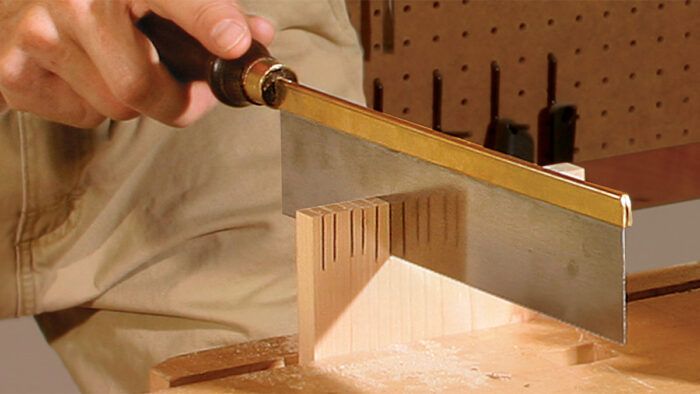Dovetail Saws
To cut dovetails by hand, you need a fast-cutting saw that's easy to control.

Synopsis: It’s hard to beat hand-cut dovetails for adding beauty, strength, and detail to a project. But mastering the dovetail saw requires perseverance, and it’s important to select the best tool for the job. Furniture maker Chris Gochnour prefers Western-style dovetail saws for their sturdy, thick steel construction. For this review, he tried out 11 pistol-grip and gent’s saws ranging in price from $10 to $125, testing them for speed and ease of cutting, smoothness, and accuracy.
Hand-cut dovetails are a hallmark of craftsmanship, adding unmatched beauty, detail, and strength to a project. I often tell students that dovetailing by hand isn’t difficult. But mastering the dovetail saw requires perseverance, and having the best tool for the job can make all the difference in the world.
Some woodworkers like to use Japanese dovetail saws, which cut on the pull stroke. These saws tend to be razor sharp out of the box, but the steel is often very thin and the teeth are bent and broken easily. Japanese saws also are more challenging to sharpen. The high-end saws frequently are returned to Japan for sharpening, and the moderately priced saws often are discarded once they become dull. Both Japanese and Western-style saws have their advocates; I prefer the Western style because of their sturdy construction and thicker steel. I also like that they cut on the push stroke and are sharpened easily.
For this review, I tried 11 Western-style dovetail saws, from $10 to $125, to evaluate their overall performance and value right out of the box. I used each one extensively in cherry, oak, and maple, making cuts with the grain and across it. I observed how fast each saw cut, the ease with which it started a cut, how smooth the saw was throughout the cut, and how well it tracked a line. I also checked the saw’s quality of construction and ergonomics.
What to look for in a dovetail saw
To make fine dovetails, you need a saw that cuts fast, tracks a straight line, and leaves a smooth, narrow kerf. It should be easy Japanese saws also are more their overall performance and value right to control and comfortable to hold. Other important considerations are the tooth pattern (how the blade was sharpened), the blade length, how the blade is attached to the back, and the handle style.
From Fine Woodworking #183
For the full article, download the PDF below:
Fine Woodworking Recommended Products

Veritas Precision Square

Marking knife: Hock Double-Bevel Violin Knife, 3/4 in.

Suizan Japanese Pull Saw








Log in or create an account to post a comment.
Sign up Log in